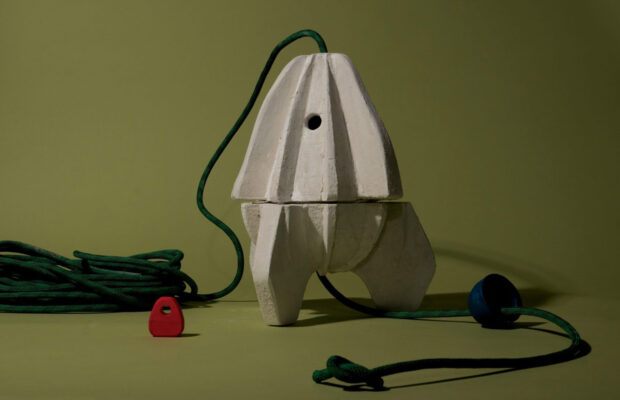Sustainably Designed Reefs Are The Future Of The Sea

Drawing inspiration from oyster reefs, Mary Lempres has crafted bio-cement modules designed to mimic the natural structures of reefs, part of the ocean’s vital ecosystem.
Lempres’s journey began with a simple question: How can we harness the resilience of nature to protect our coastlines and promote marine biodiversity? This question has never been more important, given the damage done to marine environments through climate change and human activities. The answer lay in biomimicry—the practice of emulating nature’s genius to solve human problems. Inspired by the intricate formations of oyster reefs, Lempres set out to create a bio-cement structure that could replicate their remarkable qualities.
At the heart of Reef Rocket are its bio-cement modules—ridged surfaces that mimic the natural contours of oyster reefs. Through a meticulous process, Lempres and bio-geotechnical specialist Ahmed Miftah developed a method for growing plant-derived cement. The solution, poured over crushed aggregate sourced from local restaurants and New York Harbor, forms the backbone of Reef Rocket’s durability and environmental friendliness.
“The resulting product is water-resistant, durable and comparable with standard concrete containing the same amount of aggregate,” explained the designer. “It can be grown in any environment without heat or otherwise burning fossil fuels and is derived from waste products, making it an affordable and scalable alternative to cement.” Reefs, as part of nature’s ecosystem, help to prevent erosion, as well as providing a habitat for all sorts of marine life to grow.
What sets Reef Rocket apart from other manmade reef systems is its ability to grow like a living organism. Over the course of several days, the bio-cement undergoes a transformation, forming mineral bridges that create a resilient, water-resistant structure. Unlike traditional concrete, Reef Rocket requires no heat or fossil fuels to produce, making it a sustainable alternative for coastal protection and biodiversity enhancement. “Bio-concrete is chemically identical to the material oysters produce to grow their reefs. The key difference is the bio-concrete grows in just several days, while oyster reefs take millennia to grow,” says Lempres.
“I was inspired by the ability of this reef-growing material to withstand extreme wave energy and corrosive saltwater,” she said. According to Lempres, Reef Rocket was developed to be small in size, lightweight and easy to assemble, making the design accessible to as many people as possible. The end result is a material that leverages nature’s ability to grow durable minerals to create vital reef structures. These structures will then, by their very nature, help to defend against environmental degradation caused by human activities and climate change. By harnessing the natural processes of reef formation, Lempres has paved the way for a future where sustainability and innovation go hand in hand.













 © 2024
© 2024
0 comments